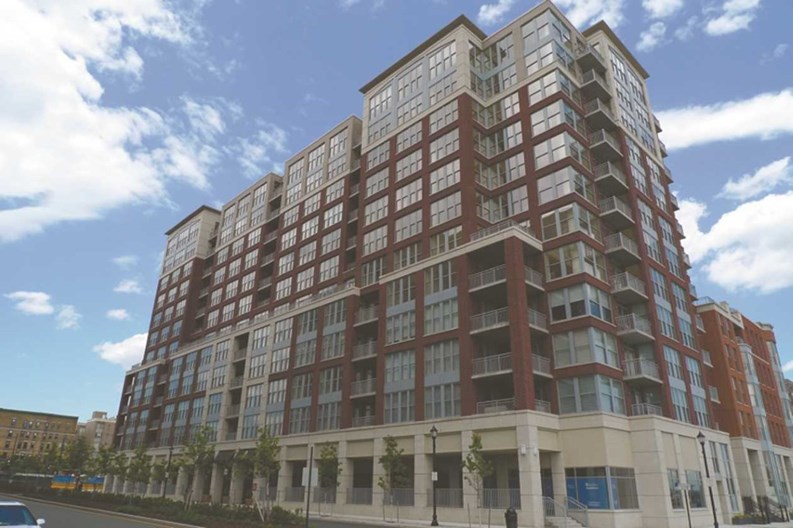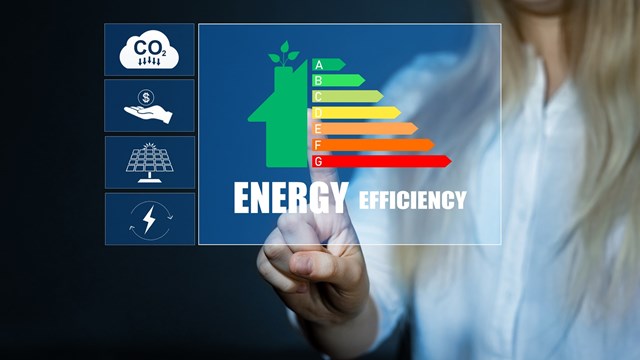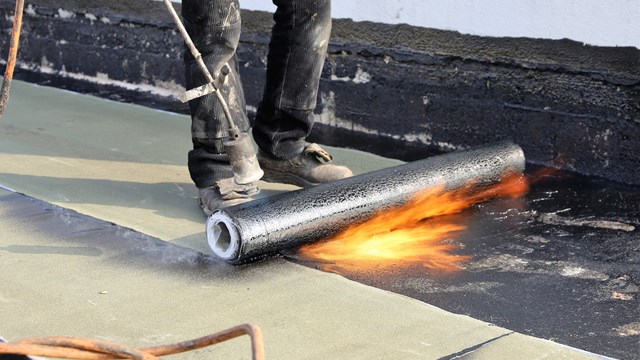In recent years, being green has become more than just a trendy buzzword—for many Garden State HOAs, it’s now a way of life. More and more communities are adopting and implementing environmentally-sensitive policies, and intentionally using more eco-friendly products.
Taking a greener course makes sense for many residents, who see helping the environment and saving money for their association’s operating expenses as worthy benefits of using green practices in their communities. While many residents recognize the value in being environmentally friendly, and will often pay a premium to do so, some green measures can be implemented in a community without being prohibitively expensive. Not only board members and property managers, but average residents also can take advantage of the green programs available to help defray the cost of greening their developments. Starting the process is often as simple as going online, finding the pertinent information and applying for the program right then and there.
Green Incentives
While some may feel that "going green" is such an over-used term these days, the federal, state and local government offer numerous incentive programs for single-family and multi-family homeowners to achieve some substantial savings when making energy-efficiency improvements.
According to Jason Kliwinski, AIA, LEED AP, the president the New Jersey chapter of the American Institute of Architects (AIA-NJ) and the director of sustainable design for the Spiezle Architectural Group, Inc., there are programs for the small residential and larger commercial sector. "In New Jersey, it depends on the size of the building and there's bit of a gray area between low-rise and mid-rise residential here. Once you get over, I believe, it's three stories, you cross into the commercial sector."
For example, says Mary Sheehy, the administrator of the New Jersey Green Homes office, a division of the New Jersey Housing and Mortgage Finance Agency, homeowners associations cover many different building types. Of the available energy efficiency and renewable energy programs in New Jersey, most are building-based (determined by code definitions of building types): According to Sheehy, available resources will be determined on whether a property is composed of single-family (less than 4 units per building), low-rise (under 5 stories with no elevator), mid-rise (between 4 and 7 stories, with an elevator), high-rise (over 7 stories), master-metered buildings and/vs. individually-metered buildings. The NJ Clean Energy Program also divides programs based on utility energy/meter type: whether a building receives commercial or residential energy service.
Most everyone is familiar with the federal government's Energy Star program which classifies energy efficient appliances, windows, lights, and other mechanisms used in residential living. The program offers rebates for consumers who replace items—including heating systems and windows—with higher efficiency systems and items. Energy Star-approved products bear a seal that states that they are approved by the program. More information can be found at www.energystar.gov. Also check out the New Jersey Board of Public Utilities, which administers the NJ Clean Energy program (www.njclean energy.com). Other programs include New Jersey SmartStart Buildings and Pay for Performance. The primary goal of New Jersey SmartStart Buildings is to provide a range of free support and financial incentives to help commercial, industrial, institutional, municipal and educational organizations of all sizes throughout the state implement energy efficiency measures to yield substantial energy savings, both now and for the future. Go to http://www.njclean energy.com/commercial-industrial/ programs/nj-smartstart-buildings/nj-smartstart-buildings for more information. Pay for Performance (http://www.nj cleanenergy.com/commercial-industrial/programs/pay-performance/) takes a comprehensive, whole-building approach to energy efficiency in new construction or existing commercial, industrial and institutional facilities with an annual peak demand over 200 kW. The program includes technical and construction-related assistance as well as financial incentives that can substantially offset the costs of an initial investment in energy efficiency measures. Home Performance with Energy Star allows residential homes to save up to 30 percent of their energy costs. Participating certified contractors will do an assessment and recommend what improvements can be implemented.
In addition to rebates, federal tax credits also are available on certain items through 2016, says Kliwinski. A tax credit of 30 percent of the cost up to $1,500 is available is available for existing homes for purchases related to biomass stoves, HVAC, insulation, roofs, non-solar water heaters and windows and doors. A tax credit for 30 percent of the costs of geothermal heat pumps, small wind turbines and solar energy systems is available through 2016 in existing homes and new construction.
A comprehensive list of New Jersey resources can be found at www.njgreen.gov, www.dsireusa.org for a state-by-state database of incentive programs, or http://www.nj.gov/dca/ divisions/dhcr/offices/energy.html.
What You Can Save
Sheehy explains that "Sustainable/Green Design" can basically be described through three categories: energy efficiency, renewable energy and the term 'green building'. Energy Efficiency is understood as reducing energy demand, or consumption, and creating a building that has lower utility bills. Renewable Energy is the active production of electricity through a process that does not generate pollution and from a source that is plentiful and is unlimited/or easily renewed—such as the sun, wind, water and human waste (landfills), and Green Building encompasses a much more comprehensive look at sustainable design, she says.
If a building is called specifically a 'green building,' Sheehy says, then it would typically include features in all of the following categories: energy efficiency, water conservation, indoor air quality, sustainable siting, and durable/sustainable building materials. A green building can also include renewable energy systems. This approach considers how the building will affect its surrounding environment and community; considers the healthiness or local-sourcing of building materials used; as well as the health and resource efficiency of the residents.
"Solar hot water and solar photovoltaics (PV) are a good example of energy efficiency versus renewable energy," adds Sheehy. "Solar hot water systems use the sun's heat to pre-warm a building's drinkable hot water. A solar hot water system can look like thick panels on the roof with pipes running behind a glass face. By reducing the amount of heating that needs to be accomplished by a water heater—you can reduce the amount of energy you need, thereby reducing utility bills. Solar PV systems are thinner panels that convert the sun's energy into electricity," Sheehy says.
Sheehy says that her office is in the process of energy benchmarking their portfolio of over 300 multifamily rental buildings and hopes to have a report ready in about a year. Some energy efficiency savings performance requirements in each program are as follows: Multifamily Weatherization (15%), Multifamily Energy Efficiency Improvement Pilot or MEEIP (15%), Pay for Performance (15%), and Home Performance with ENERGY STAR (minimum 5% to 25%).
Concrete Examples
Alexan CityView, the largest LEED for Home multifamily community in the nation with silver certification, consists of 544 rental units along the Jersey City waterfront. It also is the largest NJ EnergyStar Homes project completed to date, according to Mike Shorter, a development associate at Trammell Crow Residential. Shorter said the movement towards greening and sustainable development is growing and New Jersey government is incentivizing developers to utilize smart growth and green building principles wherever they can.
Greening your home is not a myth, he says, based on evidence that LEED and Energy Star have concluded that projects like Alexan CityView operate at least 20 percent more efficiently than similar homes built to existing construction codes. Additionally, there is a reported savings in reduced health costs as a result of healthier living environments. Alexan CityView reclaimed or recycled 65 percent of all wastes and used recycled content in its concrete. Alexan CityView also has Energy Star-rated windows and various appliances, low-VOC adhesives, water saving irrigation systems and bathroom fixtures, and the property maintenance staff uses all green-labeled cleaning supplies. "At Alexan Cityview, the premium above general construction costs was offset by 25 percent to 30 percent," Shorter recalled. "Those are meaningful dollars when coupled with the anticipated operational savings."
Wayne Lerman of W. Lerman Architecture is involved in a pair of condo projects on the Jersey Shore, where he rehabbed existing buildings that had deteriorated due to weather, age, location and various other factors.
In the two residential projects, the Admiralty and the Ocean Reef, Lerman used sustainable recyclable products in the repair and replacement. While the buildings are not necessarily LEED-certified as you would find in a new construction, the attempt was to make the repairs in a sustainable manner and less suscepticle to the wind, water and weather conditions, he says. Projects have to be considered on an individual basis, you can't just go and repair something and slap a label on it saying it's green. And cost is a consideration, often sustainable products are more expensive to install. However, with just the improvements made, one of the board members has projected that the condo's energy bill is likely to go down by as much as 40 or 50 percent.
"There's some subtleties in building design that you do that's green today that deal with site issues," Lerman says. "But with existing buildings you have what you have. If you're doing a new building in a house or something like that, when you have a north, south, east, west exposure, sometimes you try to orientate the structure based to the sun orientation as well as the north side and not having a lot of glass on the north side and trying to get the benefit of the sun to heat in the winter time and try to shade the windows so that your heat in the summertime is less than your operating costs for air conditioning. But you can't always do it all the time."
John Wojciechowski is a construction project manager with RPM Development Group, which builds Energy Star and LEED certified multifamily buildings in New Jersey. One of the projects he worked on is Berry Street Commons in Franklin Township, consisting of one, two, and three bedroom affordable rental units. "Some of the green features of Berry Street Commons include panelized construction, Energy Star rated windows, appliances and lighting, low-VOC paints and finishes, low-VOC Green Label carpeting, rooftop solar PV systems on both buildings," he says. "Over 90 percent of all construction waste generated on the job was recycled."
Daniel Gans is co-founder of the Hoboken Brownstone Company, which is transforming the former Van Leer Chocolate Factory at 110 Hoboken Avenue in Jersey City into a sustainable urban mixed-use community of more than 400 homes and 7,500 square-feet of retail space. The project, which will utilize groundbreaking, energy-efficient building science new to this area, is in the pipeline and scheduled to commence in the next few months. Their building philosophy is based in part on what is required by code in many European countries, Gans says. They use a system of energy recovery ventilation or ERV, where the existing air and subsequent moisture is exhausted out of the building and replaced by new air brought in by the HVAC system. Then various types of alternative energy like solar, geothermal, etc., can be incorporated into the design to make the building much more energy-efficient, perhaps as much as 50 to 80 percent more. The ultimate goal, says Gans, is to design a net zero energy building.
Not a Myth
True savings are not a myth and are possible, he says, and advises HOAs and homeowners to think of simple methods, like installing shutters and awnings, which will make your overall HVAC system more efficient.
"There are many ways to "green" your home and not all of them cost money," says Wojciechowski. "Obviously some strategies have a significant upfront cost involved, like investing in a solar PV system, but other strategies only require a person to make smarter choices. A person can easily reduce the water usage in their home by buying low-flow faucets and high-efficiency toilets. You can even save water right now by simply adjusting the float valve in your current toilet to use less water per flush. Buying a programmable thermostat and setting it properly can dramatically reduce your yearly energy costs. My point is that there are countless ways to "green" your home right now by spending little to no money. Going 'green' is not about any one big thing that you can do, it's about making small changes and smarter choices to better your own health and the health of the environment around you."
Kliwinski suggests getting a professional consultant, architect, contractor or engineer to navigate the incentive review process as it can be quite complicated. "Most architects today are savvy on the incentive program and how to tie them to projects. And that's really what you need to be able to do. Everybody's got issues with their buildings, whether it's an old heater or old windows or whatever. The ability to identify those projects and link them to the incentives is what, what you go to a consultant for because they can navigate the web, and the timeline, and their application requirements. And certainly a savvy building owner or facility manager can do that, too."
Debra A. Estock is managing editor of The New Jersey Cooperator. Additional reporting by David Chiu.







Leave a Comment